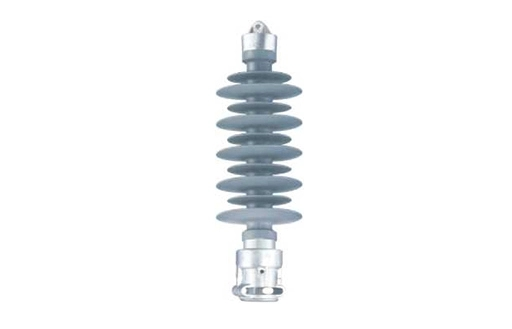en
+
Lightning arresters on medium and high-voltage transmission lines are an important part of the power system. Their main function is to protect power equipment and wires from atmospheric charges such as lightning to ensure the safety and reliability of power transmission. The core working principle of the arrester involves physical concepts such as electric field strength, conductivity, and breakdown voltage. YF Power is a high voltage surge arrester manufacturer. In this article, we are going to talk about the working principle of lightning arresters in detail below.
In order to understand how a lightning arrester works, you first need to understand the relationship between voltage and electric field strength. Voltage is the potential difference between charges, usually measured in volts. Electric field strength is the potential gradient at a certain point in the electric field, usually expressed in volts/meter (V/m). The relationship between electric field strength and voltage is given by Gauss's theorem, which tells us that electric field strength is a function of the distribution of charges in the electric field.
Lightning arresters on medium and high voltage transmission lines usually consist of one or more metal oxide (MO) elements that conduct current when the electric field strength rises to a certain level. The core material of MO components is usually zinc oxide, which is highly resistive but becomes conductive under high electric field strength.
The working principle of the arrester is based on the characteristics of MO components and the concept of breakdown voltage. The following is the core working principle of the arrester:
Monitoring Electric Field Strength: When a lightning arrester is installed on a medium or high voltage transmission line, it is exposed to the atmospheric electric field. When a thunderstorm occurs, the electric field strength increases significantly because the potential difference between the charged clouds and the ground increases. At this time, the MO element of the arrester begins to monitor the electric field strength.
Changes in the MO element: When the electric field intensity increases to the specific electric field intensity level of the MO element, the MO element will begin to conduct current. This level of electric field strength is often called breakdown voltage. The breakdown voltage is the electric field strength required for the MO element to change from a high-resistance state to a conductive state.
Directing current to ground: Once the MO element conducts, it allows current to pass through and guides these currents safely to ground. In this way, the lightning arrester flows the electric charge generated during a lightning storm into the ground, thereby preventing the current from flowing through the transmission lines and related equipment.
Reset and recovery: Once the thunderstorm passes and the electric field intensity drops below the breakdown voltage of the MO element, the MO element will return to its high resistance state and wait for the next thunderstorm. Lightning arresters can often repeat this process multiple times, thus providing protection during multiple lightning storms.
In practical applications, there are many types of arresters, including gas discharge arresters, metal oxide arresters, insulating sleeve arresters, etc. Each type of arrester has its specific working principles and application scenarios, but their core working principles are closely related to the monitoring of electric field strength and the conduction of MO elements.
The presence of lightning arresters is essential to protect the power system. They prevent electrical surges generated during lightning storms from entering the power system, thereby reducing the risk of equipment damage and increasing the reliability of power transmission. Lightning arresters also help protect transmission lines, transformers and other critical equipment and extend their service life.
To summarize, the core working principle of lightning arresters on medium and high voltage transmission lines involves monitoring the electric field strength and utilizing the conductive properties of the MO element to direct the current to ground. These arresters play a key role in the power system, ensuring the safety and reliability of power transmission. They play a vital role during lightning storms, preventing surges from entering the power system, protecting critical equipment from damage, and maintaining power system stability.




